Exploring the Unique Dolphin Species Around the World

Dolphins are among the most intelligent and charismatic creatures in the ocean, captivating us with their playful behavior and complex social structures. While the common bottlenose dolphin is most familiar, spotted near shorelines and found in aquariums worldwide, the world’s oceans are home to a diverse array of dolphin species, each with its own unique characteristics.
While we’re partial to the spotted dolphins and bottlenose dolphins we study, let’s dive into some of the most fascinating and lesser-known dolphin species around the globe.
Before we take a look at the species, here’s a refresher on how they are categorized.
Dolphin Taxonomy
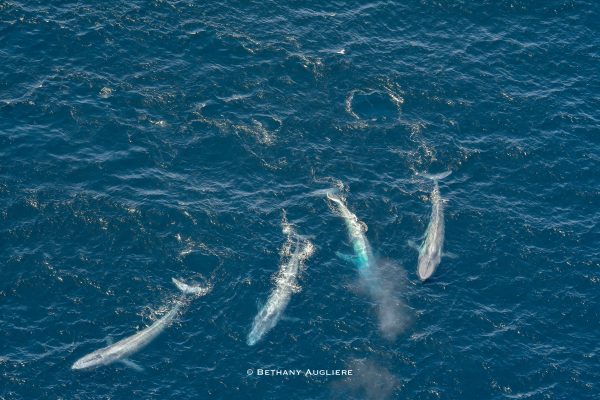
Blue whales in Monterey Bay. Photo Bethany Augliere.
Cetacea is the order that includes all whales, dolphins, and porpoises. It is divided into two suborders:
Mysticeti (baleen whales) – These are the large whales that filter-feed using baleen plates, such as blue whales and humpback whales.
Odontoceti (toothed whales) – This suborder includes all species with teeth, such as dolphins, porpoises, narwhals, belugas and sperm whales.
Dolphins are categorized into different families. Oceanic dolphins belong to the family Delphinidae, which includes species such as the bottlenose dolphin, spotted dolphins, orcas, and others. River dolphins, on the other hand, are classified into 4 distinct families, separate from oceanic dolphins and porpoises. Porpoises are also their own family.
There are 38 species of oceanic dolphins, also known as delphinids, in the Delphinidae family. This makes the oceanic dolphin family the largest of the six dolphin and porpoise families. The largest oceanic dolphins are the orca, pilot whale, and false killer whale
There are five or six species of river dolphins, also known as freshwater dolphins, that live in Asia and South America and there are seven species of porpoise.

Pilot whales swimming in the Atlantic Ocean. Photo Wild Dolphin Project.
Dolphins
Now let’s take a look at some dolphin species!
Amazon River Dolphin (Inia geoffrensis)
The Amazon river dolphin, also known as the boto, is a freshwater species found exclusively in the rivers and floodplains of the Amazon Basin. Unlike their marine relatives, these dolphins have adapted to life in murky, slow-moving waters. They are distinguished by their pinkish hue, which can range from light pink to a deeper rose color, and their flexible necks, which allow them to maneuver easily among riverine vegetation. Botos are highly social and often engage in cooperative hunting and play.
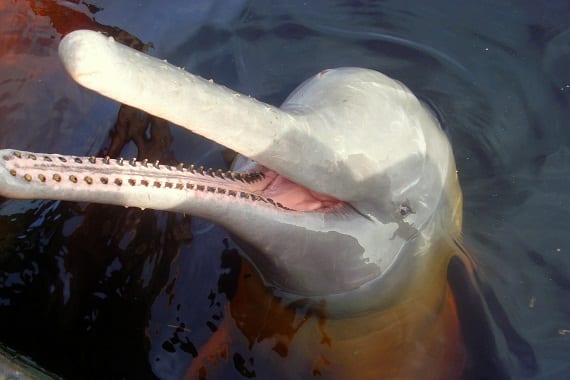
Amazon River Dolphin, Photo credit ARC.
Indo-Pacific Humpback Dolphin (Sousa chinensis)
The Indo-Pacific humpback dolphin, or Chinese white dolphin, is native to the warm coastal waters of the Indian and Pacific Oceans. Known for their distinctive hump and varying color patterns, these dolphins are often found in shallow waters near estuaries and coastal regions. Their populations are threatened by habitat loss, pollution, and fishing activities, making conservation efforts crucial.
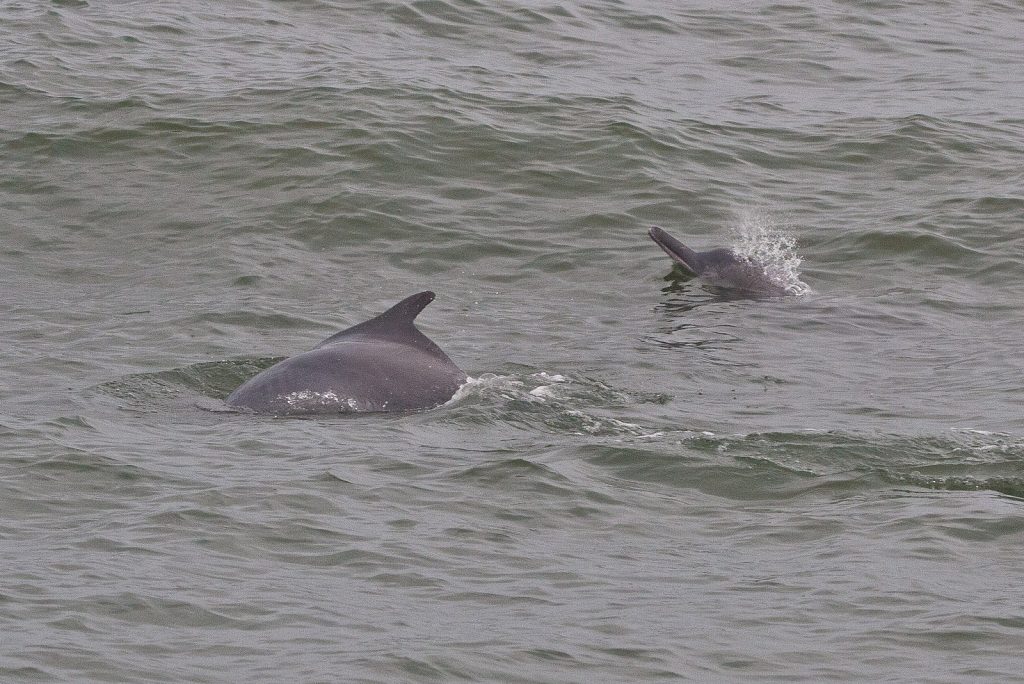
Indo-Pacific humpback dolphin (sousa chinensis) off the coast of Kerala, India. Photo Credit: Mike Prince.
Spinner Dolphin (Stenella longirostris)
Spinner dolphins are renowned for their acrobatic displays, spinning in the air with remarkable agility. Found in tropical and subtropical waters around the globe. Their spins are thought to be a form of communication and a way to remove parasites. Spinner dolphins are highly social and live in large, dynamic pods, often forming associations with other dolphin species and even other marine animals.
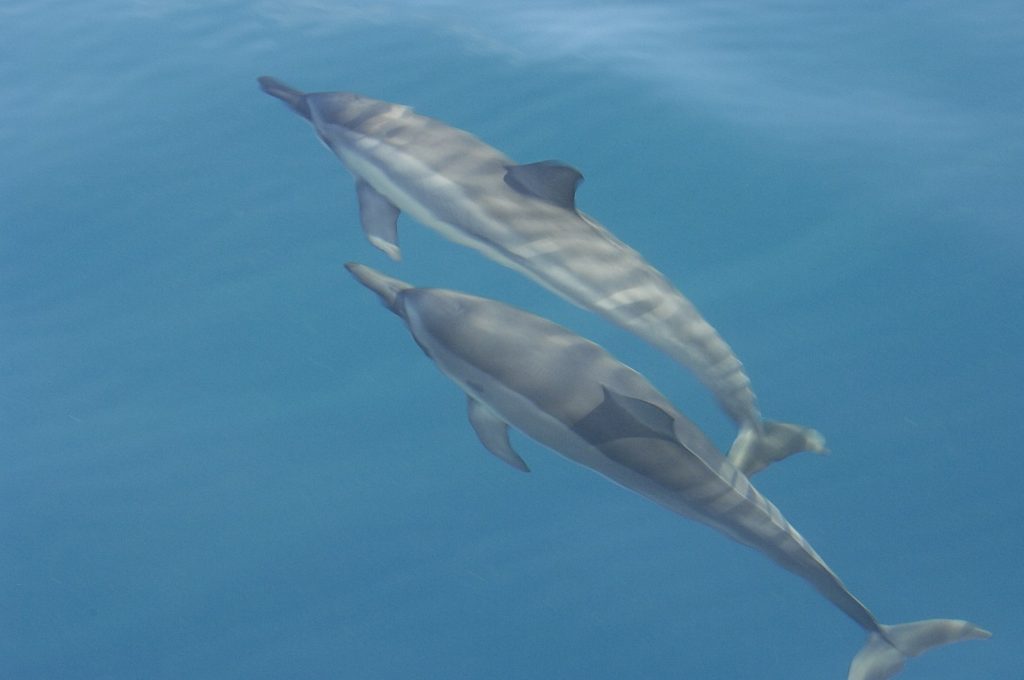
Spinner dolphin. Photo credit: Giles Douglas
False Killer Whale (Pseudorca crassidens)
Found in warm, temperate waters, these large dolphins have a similar appearance to orcas but are much smaller and have a more streamlined body. False killer whales are known for their strong social bonds and cooperative hunting strategies. They form tight-knit pods and exhibit complex social behaviors, including cooperative hunting and shared care of offspring.
We’ve seen false killer whales when crossing deep water on our way to the Bahamas.

False killer whale, hunting in deep water in the Atlantic Ocean. Photo credit: Wild Dolphin Project
Southern Right Whale Dolphin (Lissodelphis peronii)
Southern right whale dolphins are distinctive for their lack of a dorsal fin, which is unusual among dolphins. In fact, they are the only species of dolphin in the Southern Hemisphere that doesn’t have a dorsal fin. Found in the southern hemisphere’s temperate and sub-Antarctic waters, these dolphins have a streamlined body, looking like a torpedo, and are known for their speed and agility. They have a unique appearance and are often spotted in large, fast-moving groups.
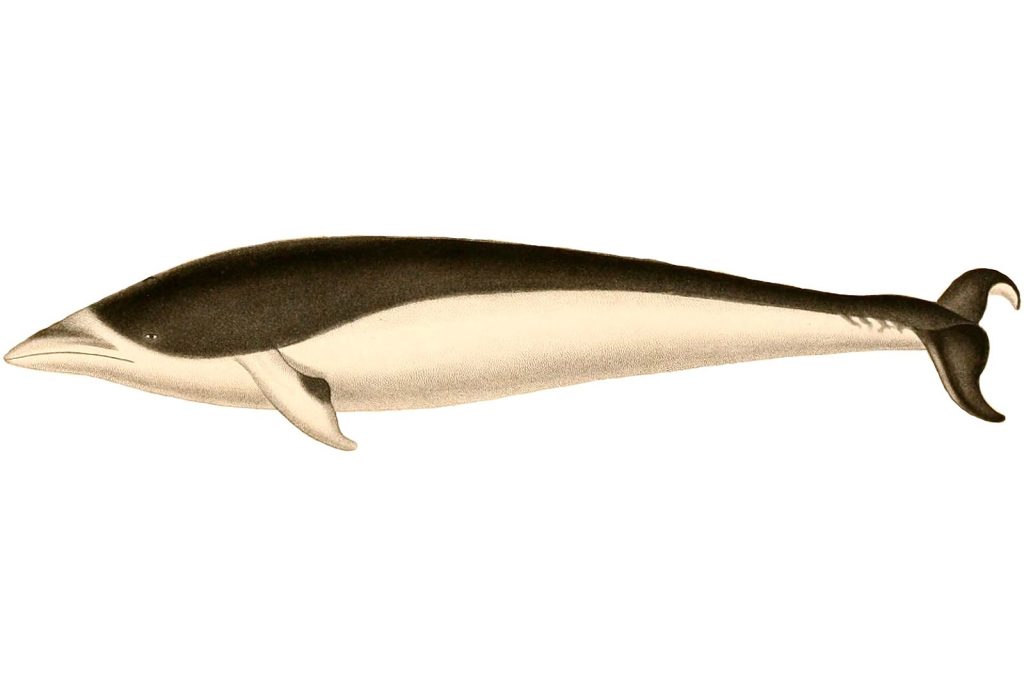
Dusky Dolphin (Lagenorhynchus obscurus)
Dusky dolphins are known for their striking color patterns and agile leaps. They are found in the coastal waters of the Southern Hemisphere, particularly around New Zealand, South Africa and South America. Their dark gray bodies with lighter undersides and distinctive markings make them easily recognizable. Dusky dolphins are highly social and engage in elaborate displays and acrobatic behavior.
Hector’s Dolphin (Cephalorhynchus hectori)
Hector’s dolphin is one of the smallest and rarest dolphin species, found only around the coasts of New Zealand. They have a distinctive round dorsal fin and a unique color pattern, including a pale gray body with dark flippers and a dark stripe running from the blowhole to the eye. Conservation efforts are critical for this species due to its limited range and susceptibility to habitat threats.
Fun fact: Male Hector’s dolphins have unusually large testes relative to their body size, which suggests they compete vigorously to mate with multiple females. For instance, the largest Hector’s dolphin in one study weighed 91.5 lb and had testes weighing 2.6 lb. By comparison, if an average adult male human (200 lb) had the same ratio, his testes would weigh about 5.7 lb — that’s pretty big!

Hector’s dolphin. Photo credit: Gregory “Slobirdr” Smith
White-Beaked Dolphin (Lagenorhynchus albirostris)
White-beaked dolphins live in the chilly waters of the North Atlantic Ocean and are known for their lively swimming and playful antics, often seen riding the waves created by boats. They usually travel in groups of five to 30 but can also form massive pods of up to 1,500. These dolphins hunt both near the surface and along the ocean floor, which is why Canadian fishermen call them “squid hounds” because they love eating squid and octopi.
Protected under the Marine Mammal Protection Act, white-beaked dolphins are the focus of ongoing research and conservation efforts by NOAA Fisheries and its partners, working to keep them safe and learn more about them.

White Beaked Dolphin. Photo credit: Hannah Beker
Chilean Dolphin (Cephalorhynchus eutropia)
The dolphin is found only off the coast of Chile; it is commonly referred to in the country as tonina. Chilean dolphins have a low, sloping forehead, no beak, a dark stripe from the blowhole to above the eye, a white throat, a low rounded dorsal fin, white patches on their small flippers, and a white belly with gray markings around the genital slit.
Interesting fact: Chilean dolphins were once referred to as “black dolphins” due to their tendency to turn black after death. They were more commonly found dead than alive because fishermen frequently harvested them for bait and food. Although legal protections are now in place, enforcing these laws in remote areas remains challenging, offering limited assurance of their safety.
Chilean dolphins favor regions with high tidal ranges and thrive in the mouths of fjords and bays. They are commonly found in estuaries, channels, and occasionally venture into rivers. These dolphins are spotted in the dramatic landscapes of the Strait of Magellan and the channels of Tierra del Fuego.

Want to learn more? Check out this page from NOAA.https://sanctuaries.noaa.gov/education/teachers/dolphins/species-spotlight.html
